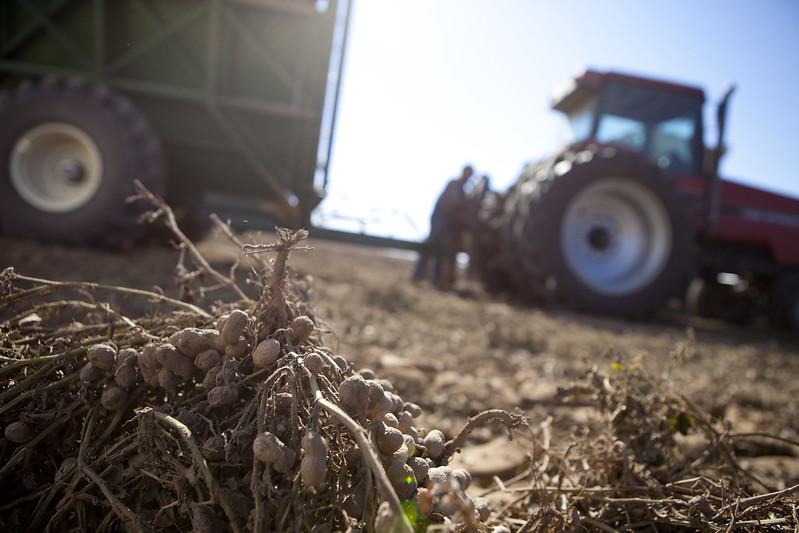Peanuts, like most major row crops in Arkansas, are heading toward harvest at an aggressive clip. But after the high heat of the 2023 summer, growers will need to weigh the decision of when to fully harvest—early or late—carefully.
Travis Faske, extension plant pathologist and acting peanut agronomist for the University of Arkansas System Division of Agriculture, said many Arkansas peanut producers will likely face a “split crop,” a situation they also faced in 2022.
“In peanuts, that means you have an early pod set and a late pod set,” Faske said. “The early pod set is ready for harvest early, and the late pod set won’t be ready until later. So the farmer has to decide which he wants to focus on in the harvest.”
Arkansas farmers planted 35,000 acres in 2023. Last year, they planted 33,000 acres and harvested 32,000, according to the National Agricultural Statistics Service.
Unique among Arkansas row crops, harvesting peanuts is a two-step process: The peanuts are first dug from the soil once mature; after being allowed to dry for several days, they are then collected, typically with a thresher.
“Do I wait and harvest that late pod set, and risk having the early pods rot off?” Faske posited, “Or do I harvest the early pods, and risk the late pods not being mature enough, so that my grade will be too low?
“It’s a challenge to successfully harvest both pod sets,” he said. “Oftentimes, you have to look at how many peanuts you have setting early, how many you have setting late, and just go with the larger number. If 70 percent of your peanuts are setting early, you’re probably better off harvesting early.”
While growers may be faced with a tough decision come harvest time, most of the growing season has at least been free of any major disruptions, Faske said. Rainfall in late July and early August brought widespread southern blight—a common yield-limiting disease in Arkansas peanuts—to the forefront earlier than normal, but impact was limited to a few individual fields.
Insect pressure in peanuts has also been low this year, he said.
Irrigation may prove to be a trickier issue as harvest ramps up, however.
“With peanuts, there’s no date to stop watering,” Faske said. “Peanuts have to be mature to harvest. So you can’t just roll up the irrigation on a given date,” as with some other crops.
Faske said that most growers in Arkansas planted their peanuts between 130 and 140 days ago and are currently “pod blasting”—exposing a small portion of the crop to see if it’s mature.
“A lot of growers will really start digging in the last week of September, and almost everyone will be digging by the first week of October,” he said. “So, we’re close.”




